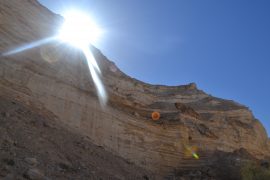The Enduring Stone: Unraveling the Essence of Jewish Education & Identity
In the vast scheme of history, how have the Jewish people managed to preserve a distinct identity and a continuous meta-narrative amidst millennia of dispersion and adversity?
What is the core mechanism, the fundamental principle, that has allowed this group to transmit information and a living, breathing sense of self across generations?
Is it merely adherence to ritual? Or does it delve into a deeper, more intrinsic understanding of language and heritage, where each element, each letter, serves as a building block in constructing a collective identity that endures like a stone – unyielding and timeless?
Introduction: Abrahamic Education – A Journey into Identity, Stamped by the Coin of Generations
The Passover seder, a ritual meal commemorating Israel’s Exodus from Egypt, is not just a memorial ritual. It’s a profound educational event, deeply rooted in the spirit of our ancestor Avraham.
Abrahamic education, as expressed in the Biblical commandment “Vehigadeta l’Binkha” – “you shall tell it to your son” (Sh’mot 13:8), and in the seder‘s engagement with children’s questions, is more than merely imparting knowledge or bequeathing customs. Its essence lies in transmitting identity and fostering intergenerational dialogue around the foundational questions of personal and collective existence.
Jewish tradition, in the interpretive texts known as Midrash, speaks of “the Coin of Avraham” – a symbolic coin bearing portraits: an old man and woman on one side (representing Avraham and Sarah) and a young man and woman on the other (Yitzḥak and Rivka).
Embedded within this coin are the fundamentals of Abrahamic education:
1. Authority and Transmission: Just as a coin symbolized royal authority in antiquity, Avraham’s coin symbolizes his importance as a patriarch and the responsibility placed upon him – and his successors – to make his mark, to pass on the mission and values to the next generation. This is not just a suggestion, but an imperative, highlighting the father’s crucial role in the educational process.
2. The Nature of Identity: The Hebrew word for coin – “matbe’a” – is related to the root “teva” (“nature”). This linguistic connection implies that the intergenerational bond and the transmission of heritage are not merely external obligations but are actually part of the very nature of Jewish identity – an innate and deep-seated need ingrained within the people.
3. Renewal within Continuity: The coin does not replicate the same generation but depicts the succession of renewing generations. It symbolizes continuity that is not stagnation, but a living process where each generation confronts its unique challenges, living yet does so as a link in the chain, in dialogue with the past and the future. This process ensures that each generation is a recipient and an active participant in the ongoing narrative of Jewish identity.
Unlike educational approaches that focus solely on instilling information or shaping external behavior, Abrahamic education – represented by this coin – aims for the core. It seeks to awaken within the child the question of their destiny’s meaning (“Who am I?” “What is my role in the world?”). It recognizes that this question is not a sign of rebelliousness but a natural yearning for understanding and belonging. Therefore, the roles of the father (and the educator) extend beyond providing answers; they must transmit a living memory (in Hebrew, “Zakhor” – “remember” – is an active verb, making the past present) and share a historical narrative that also serves as a personal story. This empowers the child with the tools to decipher their unique identity within the living historical and familial continuum, marked by the coin of generations.
This approach requires honesty and courage. It recognizes the complexity of identity, the historical branching points, and the diverse ways the younger generation connects with (or disconnects from) tradition. It acknowledges that failing to transmit memory and meaning can lead to disconnection and spiritual rupture. By accepting this complexity, we validate our community’s diverse experiences and perspectives.
The following dialogue between a father named David and his son Eitan (meaning “strength”) seeks to reflect this engagement. It attempts to present an authentic Abrahamic discourse that tries to pass the “coin” from one generation to the next. It does not shy away from difficult questions about relevance, identity, and history. It sees them as an opportunity to deepen the connection, revive the memory, and embark together on an ongoing journey of personal and collective discovery, using the framework found in the Haggadah, in the spirit of the education that began with Avraham.
Scene: A few night before the Passover seder. Eitan is looking through a Haggadah in the living room. He appears thoughtful. David enters and sits beside him.
David: Getting ready for the seder Eitan? I see you’re delving into the Haggadah this year.
Eitan (lifts his eyes and gives off a slight sigh): Yes… and no. I’m reading but I don’t understand it. I grasp the story of the Exodus, but what does it have to do with me today? This whole ceremony, these words… it feels like a play we repeat every year. You know what I mean?
David (nods slowly and gives his son a serious look): I understand. I understand it very well. And honestly? Your question is perhaps the most essential aspect of seder night. It’s not disrespectful to ask, Eitan. Quite the opposite. The entire seder is designed to encourage questions. It prompts us to wake up and think: “Ma Nishtana“? Why do we do what we do?
Eitan: But the answer always sounds… old. “Avadim hayinu“ (“we were slaves”). We were. How does that help me today, with everything happening around us, with all the chaos in the world. Even here in this country?
David: That’s precisely the point. The central verse, the mitzvah is “V’Higadeta l’Binkha” (“And you shall tell your son”). It’s not merely an order to recount an old story; it’s a commandment to transmit something vibrant: the memory. Thinkers explain that our identity, who we are as Jews, is deeply tied to this memory of the Exodus from Egypt. If we forget where we came from – from slavery to freedom – we lose something fundamental about who we are today. It’s not just a historical event; it’s a formative experience that continues to live within us, shaping our collective consciousness.
(David hesitates for a moment)
David: And perhaps… perhaps I haven’t always managed to convey that to you properly. Maybe at times, out of habit or preoccupation, I’ve treated it like “a play,” as you mentioned. And failed to express it in a genuine way. I didn’t connect it to our lives here and now. This might be part of your difficulty in connecting. That’s my responsibility.
Eitan (slightly surprised at his father’s honesty): I’m not sure if it’s your responsibility… but yes, it feels distant. I notice friends who don’t connect with it at all. They’re like… that “fifth son”? The ones who don’t even come to the seder table?
David: Exactly. The “Four Sons” mentioned in the Haggadah include the wise one, who seeks to understand the details of observance; the wicked one, who distances himself by asking, “What is this service to you?’; the simple one, who simply asks, “What is this?”; and the one who doesn’t know how to ask. Tradition teaches that you should communicate differently with each one, tailoring your response to their personalities and outlooks. It’s a painful thought there are some who aren’t even present to ask or hear. Our challenge today is to reach them. But we need to also figure out how to communicate with you. Those who are still here and asking questions. In a way that resonates.
Eitan: So how does it connect? This ancient story to our reality?
David: Let’s look at the second narrative approach in the Haggadah. The one that begins before Egypt: “Mit’ḥila ovdei avoda zara hayu avoteinu” (“at first our ancestors were worshippers of idolatry”). An important interpretation here is that “avoda zara” isn’t solely about bowing to idols in a literal sense. It also signifies “foreign worship” or “foreign service” – being enslaved to a foreign culture or idea. Being in a state of spiritual or cultural subjugation, and serving a purpose that isn’t really yours. It’s a state of disconnection from your roots and identity.
Eitan: Like the Jewish people being in exile from our land for two thousand years?
David: Exactly. But the pattern started even earlier, back with Avraham. He was called “HaIvri” (“the Hebrew”), right? That name itself carries layers of meaning according to our tradition. He came from “ever“ – beyond – the river; he crossed over physically and spiritually. The root also connects to being “me’ubar“ – metaphorically pregnant, carrying immense potential for the future. And, of course, he spoke Ivrit (Hebrew), our language, seen as a core vessel of identity. Avraham left the “avoda zara” – foreign service – of Ur Kasdim. But then… the story branched out, which is crucial for understanding identity.
Eitan: You mean with Yishmael and Yitzḥak?
David: Yes. From Avraham came Yishmael. The progenitor of the Arabs. He received a blessing of many descendants – “And I will multiply his seed.” Some scholars point out that this blessing seems focused on expansion in the present, across space and time, perhaps less on the specific Jewish concept of “Toldot“ – a Hebrew term implying generational history, lineage, and a purposeful development or “becoming” through time. We see this today, the immense demographic and political strength of Islam, the civilization of Yishmael, entering history with great force. It’s as if that ancient blessing is being fully realized.
Eitan: So they’re… not part of our people’s history?
David: They are part of Avraham’s broader family story, sharing that root, but the particular covenantal path leading to the Jewish people, according to our narrative, went through Yitzḥak. And from Yitzḥak, another split: Esav, who received his inheritance of Mount Seir quickly (who our sages associate with the Roman empire and Western civilization), and Yaakov – who was renamed Israel, the direct ancestor of the Jewish people. Yaakov is the one who continued our specific line. But through going down to Egypt. Through exile and slavery, and the subsequent need for redemption, to remember, and to tell the story. Our path, this narrative suggests, is deeply intertwined with memory, with constantly grappling with the dynamic of exile and redemption. That’s presented as the core structure of our identity; it’s distinct.
Eitan: So… telling the story at the seder is basically understanding our historical DNA? This pattern of exile and redemption, of dealing with external and internal foreign service, of the constant need to “cross over” something, to embody being “Hebrew”?
David (beaming): You’ve phrased that beautifully. It’s not just a story about what once was. It’s a narrative that explains us to ourselves, according to this perspective. It gives us tools to understand our struggles today, our complex relationships with the descendants of Yishmael and Esav, and the challenge of maintaining our unique identity in a world pulling us in so many other directions. And telling it to you, here, is my attempt to connect you to this chain, this living history, to make sure you don’t become disconnected like the fifth son, but remain a living and breathing part of this story. So you can ask questions from within the story, not from outside it.
Eitan (silently pondering): That… gives it a different meaning. It’s still complex, but it feels less like a dusty story from the past.
David: That’s the whole point. The Haggadah invites us to a living dialogue, both amongst ourselves and with all the generations before us. This perspective on our story, as we strive to identify its core elements and branches, makes us curious about other peoples too. Doesn’t it?
Eitan: What do you mean?
David: If our story revolves around exile and redemption, memory and promise – what is the formative story of other peoples? What’s their cultural and historical DNA? Can we identify unique “blessings” or challenges that shaped their path, just as we identify the split from Yishmael and Esav in ours?
Eitan: Are you asking what their “Exodus” is? Or what’s their “v’Higadeta l’Binkha” – the core story they tell their children?
David: Something like that. What is the central narrative they tell themselves about their identities? What are the turning points that have shaped them? If we understand these different foundational stories, we can better understand our encounters with – and sometimes the clashes between – peoples and cultures. It really makes you think…
Eitan: Yeah… so if our story, our identity, is so entwined with this pattern of exile, memory, and striving for redemption… how can my generation find any real positive meaning in that? How do we live it without simply feeling like we’re burdened with historical baggage?
David: That’s a crucial question. It connects to the other part: if we understand the different historical paths stemming from Avraham – ours through Yaakov but also Yishmael’s and Esau’s – how should that understanding shape our relations with the Arab and Muslim world, and with the West today? Can this perspective help us discover ways for genuine dialogue, beyond the usual politics?
Eitan: And what about us, right here? How do you, or parents in general, really bridge the gap? How do you make this ‘telling the story’ truly connect with someone like me, or even someone more distant or indifferent, without it sounding like clichés or just irrelevant stuff from the past? How does the commandment “V’Higadeta l’Binkha” actually work effectively today?
David nods and shares a thoughtful look with his son. The questions hang in the air.
Living Stones: Constructing Identity Through Intergenerational Dialogue
The essence of Abrahamic education, as revealed in the Passover seder and the broader narrative of Jewish tradition, extends beyond merely conveying historical facts; it involves constructing a living identity through intergenerational dialogue. This dialogue, exemplified by the exchange between David and Eitan, aims to awaken within each individual a sense of belonging and purpose, fostering a connection to the “coin of generations.”
We return now to the concept of the “stone” – the “אבן” (even). As we explored, this word encapsulates the essence of “אב” (av) and “בן” (ben), father and son, mirroring the core principle ofAbrahamic education: the transmission of heritage and identity from one generation to the next. The stone, enduring and unyielding, symbolizes the strength and continuity of this lineage.
The Hebrew language, with its inherent depth, reinforces this idea. Each letter and each word serves as a building block in constructing a narrative that transcends time. Just as the stone is composed of father and son, so too is Jewish identity built upon the foundation of ancestral wisdom and the promise of future generations.
The act of “telling the story” – “V’Higadeta l’Binkha” – is akin to laying stones one upon another to build a structure that stands firm against the currents of history. This structure, this identity, is not static; it evolves and renews itself while remaining rooted in its foundational principles.
The dialogue between David and Eitan reveals the challenges and complexities of this transmission. It acknowledges the “fifth son” – those who are disconnected – and seeks to bridge the gap through honest engagement. The goal is not merely to preserve the past, but to empower present and future generations to find their place within the continuum, becoming living stones in the edifice of Israel’s identity.
In essence, the secret of Jewish education lies in recognizing that each individual is a stone, a vital component in the enduring structure of the nation. The “coin of generations” is not just a symbol; it is a living reality, a testament to the power of language, memory, and dialogue in shaping and sustaining a people across millennia. And just as Yaakov rested his head upon the stones, finding strength and connection in his lineage, so does each generation find its foundation and purpose within the enduring legacy of Abrahamic education.
Note: The dialogue and its insights draw significant inspiration from the writings and teachings of HaRav Yehuda Ashkenazi (Manitou), particularly his lessons on the Passover Haggadah. His work often provides us with relevant contemporary meaning through non-literal interpretations of our traditional texts.





